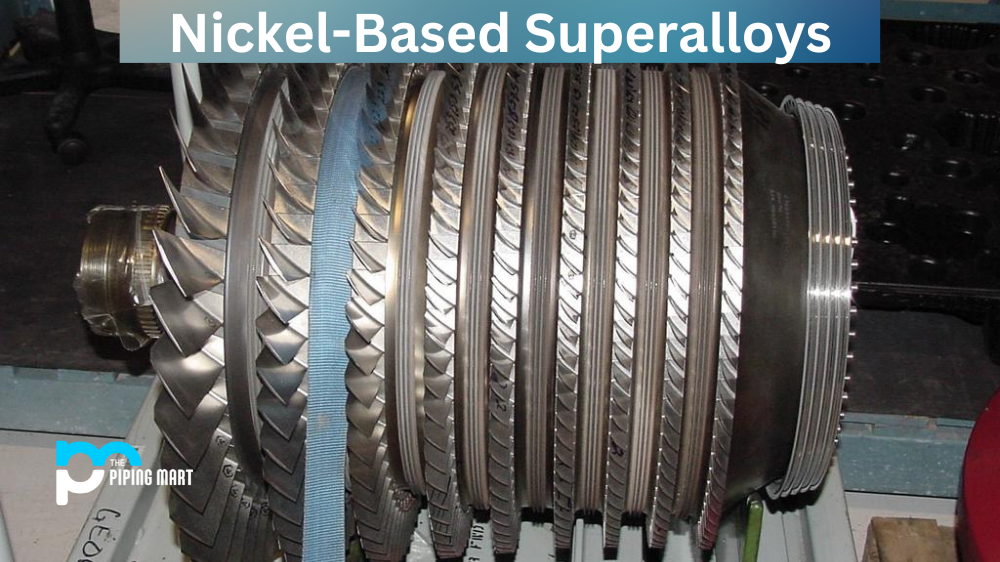Nickel-based superalloys are high-performance alloys that are used in a variety of industrial applications due to their excellent mechanical properties. These alloys are composed of nickel and other alloying elements such as chromium, cobalt, molybdenum, and tungsten. The addition of these elements gives the alloys superior strength, corrosion resistance, and temperature stability. In this blog post, we’ll explore the various types of nickel-based superalloys, the different heat treatment techniques used to enhance their performance, and some of the most common uses for these materials.
Types of Nickel-Based Superalloys
There are many different types of nickel-based superalloys available on the market today. Each type has a unique composition that provides different properties for specific applications. Some examples include Hastelloy X, Inconel 718, Waspaloy, Nimonic 80A, and Haynes 230. Each alloy contains its own combination of alloying elements and can be tailored to meet specific needs.
Inconel 625
Inconel 625 is a nickel-based superalloy that contains high levels of chromium, molybdenum, and niobium. It is known for its excellent resistance to corrosion and oxidation. Additionally, Inconel 625 has good weldability and can be easily formed into various shapes.
Hastelloy C-276
Hastelloy C-276 is a nickel-based superalloy that contains high levels of chromium, molybdenum, and tungsten. It is known for its excellent resistance to corrosion and oxidation. Additionally, Hastelloy C-276 has good weldability and can be easily formed into various shapes.
Haynes 230
Haynes 230 is a nickel-based superalloy that contains high levels of chromium, cobalt, and molybdenum. It is known for its excellent resistance to corrosion and oxidation. Additionally, Haynes 230 has good weldability and can be easily formed into various shapes.
Incoloy 800
Incoloy 800 is a nickel-based superalloy that contains high levels of chromium and iron. It is known for its excellent resistance to corrosion and oxidation. Additionally, Incoloy 800 has good weldability and can be easily formed into various shapes.
Nimonic 75
Nimonic 75 is a nickel-based superalloy that contains high levels of chromium, cobalt, and molybdenum. It is known for its excellent resistance to corrosion and oxidation. Additionally, Nimonic 75 has good weldability and can be easily formed into various shapes
Heat Treatment Techniques
The heat treatment process is an important part of manufacturing nickel-based superalloys as it helps to improve their mechanical properties. This process involves heating the material up to a certain temperature for a set period of time before cooling it down again at a controlled rate. Depending on the desired outcome, different heat treatments can be employed, such as solution annealing or age hardening. The goal is to increase strength or toughness while maintaining ductility and corrosion resistance.
Nickel-based superalloys properties
Nickel-based superalloys are an increasingly popular choice in the industry due to their many advantageous properties. Owing to their strong resistance to high temperatures, corrosion, and oxidation, they are ideal for many metallurgical applications where traditional alloys fail to provide the necessary properties. Nickel-based superalloys also have good strength-weight ratios, making them some of the lightest and most cost-effective – without compromising on strength – metals available today. What’s more, their creep rate performance is impressive, meaning they can resist deformation while exposed to even the highest strains over long periods of time. This makes nickel-based superalloys an optimal material solution for a range of engineering projects, from automotive components to energy generation equipment.
- Nickel-based superalloys are a class of high-performance materials that are resistant to high temperatures and corrosion.
- They are often used in aerospace and power generation applications where their resistance to heat and corrosion is critical.
- Nickel-based superalloys typically contain between 10 and 20 percent chromium, which gives them their corrosion resistance.
- They also contain small amounts of other elements such as molybdenum, tungsten, cobalt, and titanium, which give them their high-temperature strength.
- Nickel-based superalloys are difficult to weld and machine, but their properties make them ideal for many high-stress applications.
Nickel-based superalloys Uses
Nickel-based superalloys have a wide range of uses due to their exceptional mechanical properties and versatility in fabrication processes such as welding or casting. These materials are commonly used in aerospace engineering due to their durability at high temperatures – they can withstand temperatures up to 1400°C (2550°F). They are also widely used for components in gas turbine engines, nuclear reactors, and offshore oil rigs due to their excellent corrosion resistance when exposed to harsh environments.
- Nickel-based superalloys are used in a variety of applications where high temperatures and corrosion resistance are required.
- One of the most common uses for nickel-based superalloys is in the aerospace industry. These materials are used in jet engines and other high-temperature components due to their excellent heat and corrosion resistance.
- Another common use for nickel-based superalloys is in power generation. These materials are often used in gas turbines and other high-temperature components due to their excellent heat and corrosion resistance.
- Nickel-based superalloys are also used in the chemical processing industry due to their excellent corrosion resistance. These materials are often used in storage tanks and other equipment that comes into contact with corrosive chemicals.
- Finally, nickel-based superalloys are also used in a variety of other applications such as medical implants and jewelry.
Nickel-based superalloy melting point
Nickel-based superalloys are a special type of metal alloy known for their high-temperature strength and damage resistance. Their melting point is an impressive 1453°C, far beyond the point of other traditional materials. Industries that require higher temperatures and stress loads provide superior performance over time and in a wide range of extreme conditions. They have been indispensable materials in usages such as aircraft engines, gas turbines, power plant components, nuclear reactors, implants, and liquid rocket engines. Nickel-based superalloys are often considered the most capable materials available for these unique demands and will undoubtedly continue to prove their utility in diverse areas.
Conclusion:
Nickel-based superalloys are widely used in various industries due to their exceptional mechanical properties, such as strength, temperature stability, and corrosion resistance at high temperatures. Heat treatment is often employed in order to improve these properties further, depending on the application requirements. Different types of nickel-based alloys have unique compositions which allow them to be tailored according to specific needs while still maintaining their excellent characteristics required for demanding environments like aerospace engineering or oil rigs. With so many advantages offered by these materials, it is no wonder why they have become so popular amongst engineers and manufacturers alike!
Sakshee is a talented blogger, with a particular focus on the Business and Metal Industry. She is passionate about sharing her insights on various metal products and helping professionals to make a better decisions.




